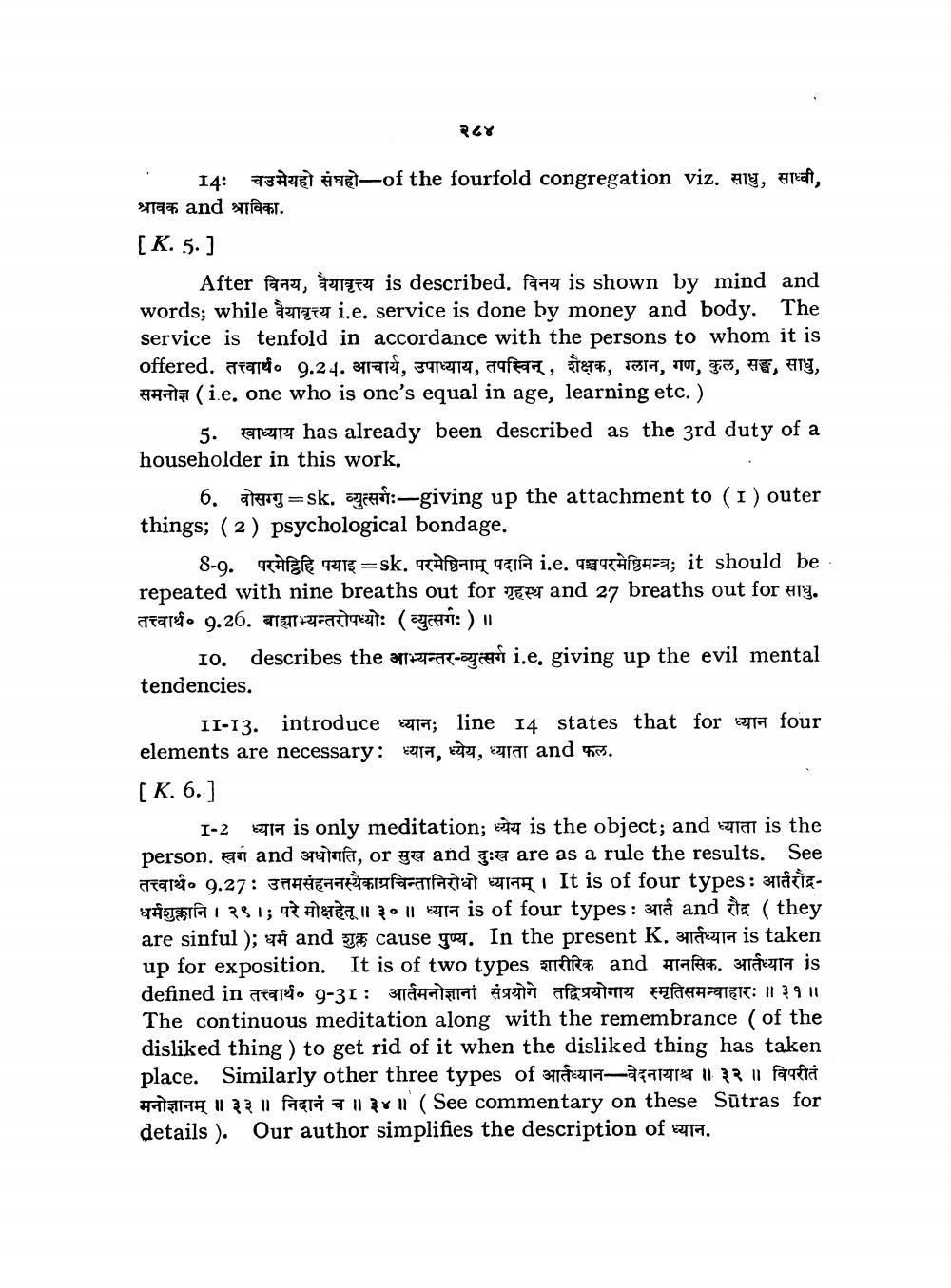________________
२८४
- 14: चउमेयहो संघहो-of the fourfold congregation viz. साधु, साध्वी, श्रावक and श्राविका. [K.5.]
___After विनय, वैयावृत्त्य is described. विनय is shown by mind and words; while वैयावृत्त्य i.e. service is done by money and body. The service is tenfold in accordance with the persons to whom it is offered. तत्त्वार्थ. 9.24. आचार्य, उपाध्याय, तपस्विन् , शेक्षक, ग्लान, गण, कुल, सङ्घ, साधु, समनोज्ञ (ie. one who is one's equal in age, learning etc.)
5. खाध्याय has already been described as the 3rd duty of a householder in this work.
6. वोसग्गु =sk. व्युत्सर्गः-giving up the attachment to (I) outer things; (2) psychological bondage.
8-9. परमेट्ठिहि पयाइ =sk. परमेष्ठिनाम् पदानि i.e. पञ्चपरमेष्ठिमन्त्र; it should be repeated with nine breaths out for गृहस्थ and 27 breaths out for साधु. तत्त्वार्थ.9.26. बाह्याभ्यन्तरोपध्योः (व्युत्सगः)॥
10. describes the आभ्यन्तर-व्युत्सर्ग i.e. giving up the evil mental tendencies.
II-13. introduce ध्यान; line 14 states that for ध्यान four elements are necessary: ध्यान, ध्येय, ध्याता and फल. [K. 6.]
I-2 ध्यान is only meditation; ध्येय is the object; and ध्याता is the person. स्वर्ग and अधोगति, or सुख and दुःख are as a rule the results. See तत्त्वार्थ० 9.27: उत्तमसंहननस्यैकाग्रचिन्तानिरोधो ध्यानम् । It is of four types: आर्तरोद्रधर्मशुक्लानि । २९ ।; परे मोक्षहेतू ॥३०॥ ध्यान is of four types : आर्त and रौद्र ( they are sinful ); धर्म and शुक्ल cause पुण्य. In the present K. आर्तध्यान is taken up for exposition. It is of two types शारीरिक and मानसिक. आर्तध्यान is defined in तत्त्वार्थ. 9-31: आर्तमनोज्ञानां संप्रयोगे तद्विप्रयोगाय स्मृतिसमन्वाहारः ॥ ३१॥ The continuous meditation along with the remembrance of the disliked thing ) to get rid of it when the disliked thing has taken place. Similarly other three types of आर्तध्यान-वेदनायाश्च ॥ ३२॥ विपरीतं मनोज्ञानम् ॥ ३३॥ निदानं च ॥३४॥ (See commentary on these Sutras for details). Our author simplifies the description of ध्यान.




